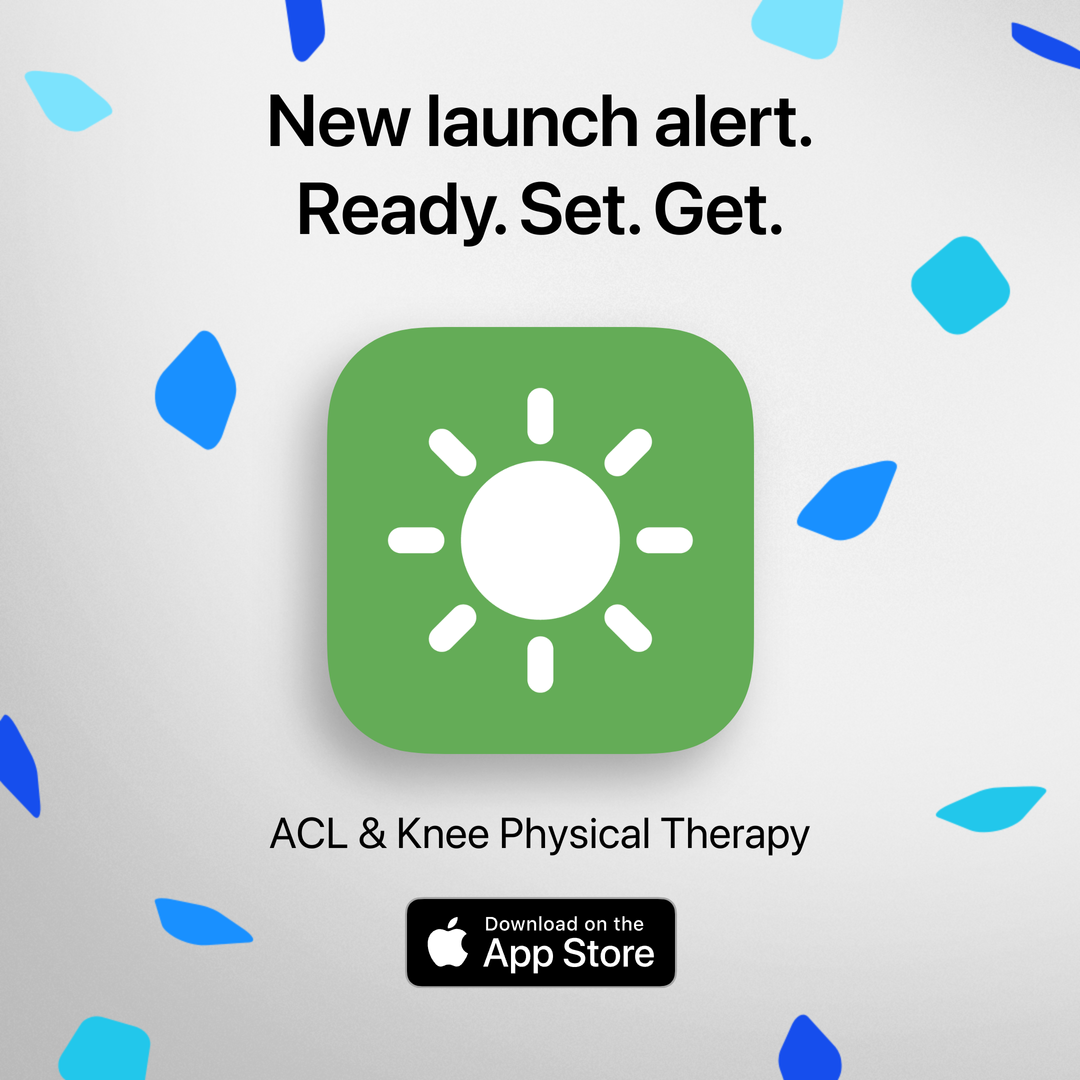Image by LPETTET from Canva
Do you know the difference between a partial knee replacement, unicompartmental knee replacement, and a total knee replacement? If you are unsure as to what these terms all mean, rest assured that you are not alone. I have dedicated this blog to help you understand the various types of knee replacements. More specifically, this blog will discuss what will happen in these operations, how they compare to each other, and which surgery is ideal for you.
Partial? Total? What do these words mean?
Beginning with the most common, a total knee replacement is what it sounds like. A total knee replacement is a surgery to replace the top part of the shin bone, the lower end of the thigh bone, and part or all of the kneecap. Together these 3 bones or parts form the knee joint, hence the term total knee replacement. If you would like to learn more about total knee replacements read this blog. The two remaining terms, partial and unicompartmental knee replacement, describe the same procedure.[1] To understand this procedure, we can think of the knee joint by dividing it into 3 compartments: the inner side of the knee, the outside of the knee, and the kneecap.[1] With a partial or unicompartmental replacement, typically only one portion of the knee is replaced. This could be any one of the 3 compartments mentioned previously, but most often it is the inner side of the knee also called the medial compartment.
Partial and total knee replacements have the same goal, which is to take out the part of the knee causing pain and stiffness, then replace them with artificial parts.[1] Both procedures require general anesthesia, meaning you will be put to sleep before the operation. After the operation, the recovery process is almost identical and may only differ in terms of timeline.[1] Check out this blog to learn more about the general recovery process after a knee replacement, and click here to learn more about walking after a knee replacement.
Which procedure is better?
With all surgical procedures, there is a possibility of complications such as an infection or a blood clot. The same risks and complications associated with a total knee replacement are also a potential risk with partial knee replacement. Read more about the common complications after a knee repalcement and what you can do to avoid them by clicking here. However, there is research that shows partial knee replacement has equal or better results than a total knee replacement. From a study of 1000 cases of partial knee replacements, 96% of the implants were still viable and functioning 5 years after the initial surgery.[5] From the 29 people that did require another surgery at 5 years, the most common cause for revision was osteoarthritis developing in the outer part of the same knee.[5] Furthermore, in a study of over 100,000 people with knee replacements there was a significantly lower rate of complication for the people who had undergone a partial knee replacement.[6] The 25,334 people with a partial knee replacement benefitted from a reduced length of stay at the hospital, lower rates of complications such as blood clots, heart attacks, and strokes.[6] People with a partial knee replacement also feel more satisfied and content with their new joint in comparison to those with a total knee replacement.[7] In a small study of 130 people with knee replacements, the 65 people with a partial knee replacement reported that their joint felt more natural and that they were more satisfied with the results of the procedure.[7] How is this all possible? There are a few reasons, first partial knee replacements are thought to be less invasive as the procedure is typically done with a smaller cut to the knee.[1] Second, partial knee replacements are often done with a younger and more active population leading to better self reported outcomes from their surgeries.[1][6]
Where partial knee replacements often come up short is the longevity or how long the knee lasts until another surgery is needed. The previous study of 100,000 people with knee replacements also found that people with partial knee replacements were 2.1 times more likely to need another surgery for the same knee down the road.[6] Total knee replacements are also more popular with surgeons as they are less technically complex, and an extremely effective (if not the only solution) to end stage osteoarthritis that is causing significant pain and hindering daily life activities.[1][2][4][6] The widespread popularity of total knee replacement is a strength of the procedure. The popularity of total knee replacements makes finding a surgeon who is competent and willing to perform the procedure much easier.[1][2]
 Image by gpiron, from Unsplash
Image by gpiron, from Unsplash
So should I get a total or partial knee replacement?
The answer to this question depends on what sort of issues exist within your knee and the current health of the knee in question. A partial knee replacement is suggested for a person with osteoarthritis or damage affecting the front and inner portion of their knee joint. The medical terminology used to describe this condition is known as Antero-medial osteoarthritis.[2] But, simply having this condition does not guarantee that you will have the choice to undergo a partial knee replacement. The following criteria would not allow a person to receive a partial knee replacement: people with an active infection, inflammatory disease such as diabetes or rheumatoid arthritis, and history of surgical procedures on the tibia or shin bone, weakness or damage to the ligaments within the knee joint.[2] This last point is particularly important as anyone who wants a partial knee replacement must have normal and functional ligaments within their knee joint to qualify. In other words, people who have had an ACL replacement surgery may not be able to opt for a partial knee replacement.[2]
Something else to consider before choosing your procedure is the surgeon who will be doing the operation. It is estimated that only 10% of the surgeons in the world offer partial knee replacements.[2] Thus, it is crucial that you know how competent and comfortable your surgeon is with any knee replacement procedure as it will affect the outcomes of your surgery. From a study of over 450,000 people with a knee replacement, it was found that a surgeon who does not perform many knee replacements, especially partial knee replacements, has 4 times the revision rate.[3] A higher revision rate means that the chances of you needing another surgery down the line is greater. The question then is how familiar with partial knee replacements should your surgeon be? A study of 41,000 knee replacements showed that surgeons that perform partial knee replacements 20% of the time will have acceptable revision or failure rates, and surgeons that perform partial knee replacements 50% of the time will have the best results.[4] The takeaway here is that how much experience and how often your surgeon does this surgery will dictate the need for another surgery.[2][4]
Conclusion
The goal of this blog was to inform people who are facing a decision between a total and partial knee replacement. We have covered differences between the two procedures, the benefits and issues, and which procedure may be best for certain people. Some practical advice, consult your surgeon and healthcare team on the current condition of your knee to determine your eligibility and also assess the competence of your surgeon in regards to partial knee replacements. Also please understand that both operations are safe and effective ways of addressing osteoarthritis of the knee that results in pain and limitations, this blog is not meant to deter you from having either procedure but to inform your choice and optimize your results.
Want to learn more about the different kinds of knee replacements? Check out the Curovate blog for easily understandable information, practical advice, and much more! Regardless of what procedure you choose, getting back onto your feet as soon as possible is important to everyone. Try the Curovate physical therapy app to get you back to doing the things you love! Curovate is an evidence-based app that will provide you with a physical therapy plan, guided video exercises, and more to assist you along your journey to recovery! Download Curovate today by clicking the links below!
If you need further customized assistance during your ACL recovery check out our Virtual Physical Therapy page to book your 1-on-1 video session with a physical therapist.


Blogs related to knee replacement
- 6 Things You Need to Know After A Total Knee Replacement
- What is a total knee replacement?
- Should I put off my total knee replacement surgery? What are my other options?
- What Kind of Exercises and Sports Can I Do After A Total Knee Replacement?
- How Long Will My Knee Replacement Last and Is There Anything I Can Do To Make My Knee Replacement Last Longer?







